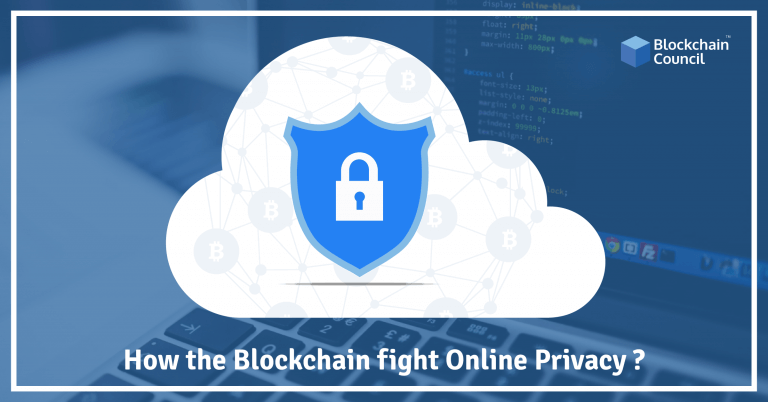
- Adeshina Ajayi
- September 22, 2023
Blockchain technology has gained significant attention for its potential to revolutionize various industries, from finance to supply chain management. It’s often touted as a highly secure technology due to its decentralized and cryptographic nature. However, like any technology, blockchain is not immune to vulnerabilities, and its security landscape is more nuanced than commonly believed. In this analysis, we’ll delve into the security strengths and weaknesses of blockchain technology, address misconceptions, and highlight the need for comprehensive security measures.
Security Strengths:
Decentralization:
Perhaps one of the most compelling security advantages that blockchain offers is its decentralized architecture. In traditional centralized systems, the presence of a single point of failure exposes them to heightened risks of breaches and attacks. However, in a blockchain ecosystem, data is distributed across a network of nodes, ensuring that there is no solitary point of weakness that malicious actors can exploit. This inherent decentralization significantly bolsters the system’s resilience and shields it from being compromised through a single vulnerable entry point.
Cryptography:
The robust application of cryptographic techniques is a linchpin of blockchain security. These techniques play a pivotal role in safeguarding transactions and upholding the integrity of the data stored on the blockchain. By utilizing cryptographic tools such as public-private key pairs, digital signatures, and hash functions, blockchain ensures that transactions are not only encrypted and secure but also verifiable and unalterable. This layer of cryptographic security establishes a high threshold for unauthorized access and ensures that the data remains intact and tamper-proof.
Immutability:
Immutability is a defining attribute that contributes to the robustness of blockchain security. Once data is committed to the blockchain, the combination of cryptographic hashing and consensus mechanisms makes any attempts at alteration or deletion exceedingly challenging. Each block’s content is linked to the previous one through a cryptographic hash, creating an unbroken chain of interlocking data. This makes retroactive changes practically impossible, providing a reliable audit trail and preventing unauthorized modifications.
Transparency:
Transparency serves as a sentinel for security within blockchain systems. The transparent nature of blockchain transactions allows all participants to access and scrutinize the entire transaction history. This feature not only fosters accountability but also acts as a deterrent to fraudulent activities. By enabling real-time monitoring and rapid detection of any suspicious behavior, blockchain’s transparency mechanism enhances the overall security posture of the system. It reduces the window of opportunity for malicious actors to operate unnoticed and encourages ethical behavior within the network.
Security Weaknesses:
51% Attack:
In blockchain systems utilizing proof-of-work (PoW) consensus mechanisms, the vulnerability of a 51% attack looms as a significant security concern. This threat arises when a single entity gains control over more than half of the network’s computational power. Such dominance allows the malicious actor to potentially manipulate transactions and undermine the trust and integrity of the entire system. This exposes a centralization vulnerability inherent in PoW blockchains, underscoring the importance of diverse and distributed participation to maintain a robust security posture.
Smart Contract Vulnerabilities:
While smart contracts offer automation and efficiency, their implementation can carry inherent security risks. These self-executing pieces of code are not immune to bugs or vulnerabilities, and flaws in their programming can lead to unintended and undesirable outcomes. Such glitches can result in substantial financial losses and erode the confidence of users. A notable case in point is the infamous DAO hack on the Ethereum blockchain, where an exploitable vulnerability in a smart contract led to a substantial theft of funds.
Human Factor:
Despite the inherent security of blockchain systems, the interfaces that bridge human interaction with these systems can introduce vulnerabilities. Human errors, such as the use of weak passwords, negligence in safeguarding private keys, or falling victim to phishing attacks, can jeopardize the security of blockchain accounts. These lapses can expose sensitive information, enable unauthorized access, and potentially compromise the assets stored within the blockchain.
Regulatory and Legal Challenges:
Blockchain’s pseudonymous nature, while providing privacy benefits, can also be exploited for illicit activities. This duality poses regulatory and legal challenges, as it necessitates a delicate balance between privacy and security. Instances involving privacy coins and initial coin offerings (ICOs) have demonstrated the intricate interplay between technological innovation and legal frameworks. The ambiguity surrounding the regulation of blockchain technologies can impact their security, potentially allowing nefarious activities to thrive within the gaps.
Addressing threats like the 51% attacks and smart contract vulnerabilities requires ongoing research, collaborative efforts, and vigilance. Moreover, recognizing the human factor as a potential weak link underscores the need for user education and robust security practices. Lastly, reconciling the privacy-boosting attributes of blockchain with regulatory and legal imperatives is paramount to ensure that security is upheld without compromising innovation.
Misconceptions:
Full Anonymity on Public Blockchains:
There is a widely held misconception that transactions conducted on public blockchains offer complete anonymity. While these transactions are indeed pseudonymous, tied to cryptographic addresses rather than personal identities, they are openly recorded on the blockchain and can be scrutinized by anyone. Advanced analytical techniques can potentially trace transactions back to individuals, eroding the presumed anonymity. Additionally, the utilization of blockchain analytics tools and external data sources can lead to the de-anonymization of users, inadvertently revealing their true identities.
All Blockchains Are Equal in Security:
Assuming uniform levels of security across all blockchains is a fallacy. Various blockchains employ diverse consensus mechanisms, cryptographic algorithms, and governance models, leading to distinct levels of security. Established public blockchains like Bitcoin and Ethereum, bolstered by their extensive adoption and robust networks, typically exhibit higher security standards compared to smaller or less established counterparts.
Blockchain Equals Cybersecurity Panacea:
A common misconception is viewing blockchain technology as a universal panacea for cybersecurity challenges. While blockchain can certainly augment security in specific contexts, it is not a panacea that addresses all cybersecurity threats. Notably, blockchain does not provide immunity against malware attacks, phishing, or social engineering – prominent cybersecurity concerns that remain outside its purview.
Inherent Elimination of Intermediaries:
Another misapprehension revolves around the belief that blockchain outright eliminates the necessity for intermediaries like banks or legal institutions. Although blockchain can diminish reliance on intermediaries in certain use cases, it’s crucial to recognize that some sectors necessitate legal and regulatory oversight that blockchain alone cannot replace. The role of intermediaries may evolve rather than vanish entirely.
Blockchain Is Always the Most Efficient Solution:
A commonly misconceived notion is that blockchain consistently represents the most efficient solution for every application. Due to the resource-intensive nature of its consensus mechanisms and cryptographic operations, blockchain can lead to slower transaction speeds and higher energy consumption compared to centralized alternatives. It’s essential to understand that blockchain’s efficiency shines in specific contexts, while other technologies like traditional databases might be more suitable for different scenarios.
Untangling these misconceptions is pivotal to gaining an accurate grasp of the capabilities and limitations of blockchain technology. Prudent blockchain adoption requires a clear comprehension of the precise use case, security requisites, and potential trade-offs inherent in its implementation.
Holistic Blockchain Security Measures:
Consensus Mechanisms:
One of the cornerstones of a holistic security strategy is the careful selection of consensus mechanisms tailored to the specific needs of the blockchain network. Whether it’s the energy-intensive proof-of-work (PoW), the resource-efficient proof-of-stake (PoS), or the delegate-driven delegated proof-of-stake (DPoS), each consensus mechanism introduces distinct security trade-offs. Understanding these trade-offs and aligning them with the network’s goals is essential for achieving a well-balanced security approach.
Regular Audits:
To preemptively identify vulnerabilities before they can be exploited by malicious actors, it’s imperative that smart contracts undergo regular and comprehensive security audits. Collaborating with skilled security professionals who specialize in blockchain technology can help uncover potential weaknesses in the code. These audits not only bolster the security of the blockchain ecosystem but also enhance user trust by demonstrating a commitment to due diligence.
Education and User Awareness:
The human element is a critical factor in blockchain security. Educating users about best security practices plays a pivotal role in safeguarding blockchain interactions. This includes promoting the use of strong, unique passwords, advocating for the secure storage of private keys, and educating users about the perils of phishing attacks and social engineering. By empowering users with knowledge, blockchain systems can significantly reduce the risks associated with human error.
Regulatory Compliance:
Collaborating with regulatory bodies is a prudent approach to ensure that the blockchain system operates within legal and compliance frameworks. Regulatory compliance not only helps avoid potential legal pitfalls but also contributes to the overall legitimacy and credibility of the blockchain network. Striking a balance between technological innovation and adherence to regulatory standards is essential for maintaining security and trust.
Hybrid Approaches:
Recognizing the multifaceted nature of security challenges, hybrid approaches offer a robust strategy. Integrating decentralization with supplementary security layers such as off-chain backups and encryption mechanisms can provide an extra layer of protection. These hybrid models acknowledge that a singular solution might not address all security concerns and, instead, offer a holistic and adaptable security posture.
Conclusion:
Blockchain technology undeniably presents a host of robust security attributes; however, it remains susceptible to vulnerabilities. Acknowledging both its strengths and vulnerabilities is pivotal in harnessing its potential while maintaining a secure environment.
Strengths and Weaknesses Acknowledgment:
Recognizing the inherent strengths of blockchain, such as decentralization, cryptography, immutability, and transparency, provides the foundation for leveraging its security advantages. Equally important is acknowledging its weaknesses, including the potential for 51% attacks, smart contract vulnerabilities, and the human factor.
Dispelling Misconceptions:
Addressing prevalent misconceptions surrounding blockchain security is essential for an accurate perception. These misconceptions encompass aspects like the full anonymity of public blockchains, the assumption of equal security levels among all blockchains, and the perception of blockchain as a universal cybersecurity remedy. Recognizing and rectifying these misconceptions fosters a more informed approach to blockchain security.
Comprehensive Security Approach:
The synthesis of these insights culminates in the imperative for a comprehensive security approach. This entails judiciously selecting consensus mechanisms aligned with specific use cases, conducting regular and thorough security audits of smart contracts, fostering user education and awareness, ensuring compliance with regulatory standards, and considering hybrid security models that enhance the technology’s strengths.
Through this nuanced and multifaceted approach, the transformative potential of blockchain can be harnessed while upholding a steadfast commitment to security. By acknowledging its multifarious nature, dispelling misperceptions, and implementing a comprehensive security framework, blockchain can become a force for innovation that thrives within a resilient and secure ecosystem.





































































 Guides
Guides News
News Blockchain
Blockchain Cryptocurrency
& Digital Assets
Cryptocurrency
& Digital Assets Web3
Web3 Metaverse & NFTs
Metaverse & NFTs
